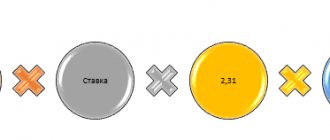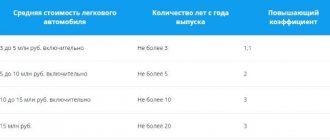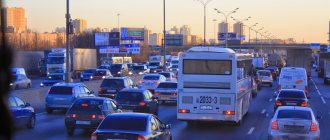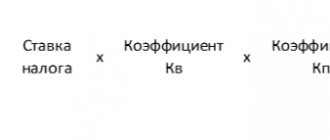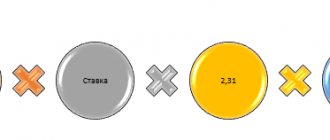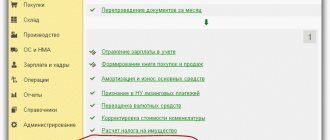Who should pay transport tax
The tax is paid by organizations and individuals, including individual entrepreneurs, for whom cars or trucks are registered with the State Traffic Inspectorate.
Also, transport tax is paid by companies and individuals (including individual entrepreneurs) who own registered self-propelled vehicles (tractors, excavators, tractors), helicopters, motor ships, boats, yachts, motor boats and other water and air vehicles. Fill out and submit your transport tax return for 2022 for free online
IMPORTANT
As for water transport, non-self-propelled (towed) vessels - barges, platforms, floating docks, etc. are also subject to tax. But in relation to trailers for land vehicles, there is no need to pay tax, even if the trailer is equipped with a motor necessary for the operation of the equipment installed on it (letter of the Ministry of Finance dated 02.16.11 No. 03-05-05-04/03).
Do I have to pay tax on quadcopters? It all depends on the maximum take-off weight of the aircraft. According to subparagraph 1 of paragraph 1 of Article 33 of the Air Code of the Russian Federation, official registration is required if the specified mass of the “drone” exceeds 30 kg. Unmanned civil aircraft with a maximum take-off weight from 0.25 kg to 30 kg inclusive are not subject to state registration, but registration (clause 3.2 of Article 33 of the RF Civil Code).
This difference in terminology is significant for transport tax purposes. As mentioned above, only registered vehicles are subject to it. Therefore, in relation to “drones” with a take-off weight from 0.25 kg to 30 kg, there is no need to pay transport tax (letter of the Federal Tax Service dated 02/11/19 No. BS-4-21 / [email protected] ).
ATTENTION
Evasion of registration of a vehicle (vehicle) will not relieve its owner from the need to remit transport tax (Resolution of the Presidium of the Supreme Arbitration Court of the Russian Federation dated 06/07/12 No. 14341/11).
Fill out waybills indicating the route and mandatory details in a special service
Major changes in transport tax for 2022
Let us remind you: from 2022, organizations have a new responsibility. They must report to the Federal Tax Service about available benefits for transport tax using a special form (approved by order of the Federal Tax Service dated July 25, 2019 No. ММВ-7-21/ [email protected] ; see “Approved application form for benefits for organizations on transport and land taxes ").
Previously, such a statement was not required - all information about benefits was reflected directly in the tax return. The Federal Tax Service clarified that applications need to be submitted only for tax periods starting from 2020. For previous years, as well as for periods during 2020 (for example, if the company was liquidated or reorganized), a separate application for benefits is not required (letter dated 09.12.19 No. BS-4-21 / [email protected] ).
ATTENTION
There is no deadline for applying for benefits. But, obviously, it is better to do this before the date of tax payment or the first advance payment on it. Therefore, if an organization has a tax exemption (advance payments) for 2022, then it is advisable not to delay submitting the application. Although, we note that the Federal Tax Service does not object to a later filing of the application (in 2022), that is, after paying the tax and receiving from the Federal Tax Service a message about the calculated (without benefit) amount of tax (letter of the Federal Tax Service dated December 3, 2019 No. BS-4- 21/ [email protected] ; see “The Federal Tax Service told how organizations can apply benefits for transport and land taxes from 2022”).
Apply for benefits online Apply for free
There is no need to submit a transport tax return for 2020 in 2022. It was canceled by Federal Law No. 63-FZ dated April 15, 2019 (see “Amendments to the Tax Code of the Russian Federation on “property” taxes: cancellation of declarations on transport and land taxes, new rules on benefits for individuals”). This is precisely why the introduction of a separate statement of benefits is connected.
Another change will affect owners of expensive cars. When calculating the tax for 2022, they must take into account the new list of cars for which increasing coefficients are applied (see “The list of expensive cars for calculating the transport tax for 2022 has been published”).
IMPORTANT
Organizations independently calculate advance payments and taxes at the end of the year and enter them into the budget within the established time frame. Starting from 2021, tax officials also determine the amount of tax (based on the information they have) and send out messages to organizations in the form approved by Order of the Federal Tax Service dated July 5, 2019 No. ММВ-7-21 / [email protected] .
The message is sent no later than 6 months after the tax payment date. If the taxpayer believes that the inspectors calculated the tax incorrectly, he can express his disagreement. In this case, you need to send explanations and supporting documents to the Federal Tax Service. Receive notifications from the Federal Tax Service about the amount of transport tax and generate payments in one click Generate for free
Transport tax table
There is no single rate for transport tax. Each subject of the Russian Federation has its own rates (but in most cases they cannot differ from the rates established in the Tax Code of the Russian Federation by more than 10 times). The rate depends on the type of vehicle (land, water, air), whether it has a motor and its power.
Information on current transport tax rates in a particular region can be found using a special service on the Federal Tax Service website. To do this, you need to indicate in the appropriate fields information about the tax period (the year for which the tax is paid) and the region. After this, you need to click the “Find” button and follow the “More details” link (located opposite the information about the regional law that appears).
How is transport tax calculated?
Individuals do not have to worry about the amount of tax they will have to pay. The tax service makes the calculations independently. The taxpayer receives a notification of the need to pay on time in the form of a registered letter or notification on the State Services, as well as in the taxpayer’s personal account.
However, this does not mean that the tax amount is some kind of secret. If a citizen buys a car and wants to find out how much he will have to pay for it annually, you can use the calculator on the website of the Federal Tax Service. Those who do not trust government officials can make the calculations themselves
The vehicle tax formula generally looks like this:
Amount of transport tax = Regional rate * Engine power (hp)
And more precisely like this:
Amount of transport tax = Regional rate * Engine power (hp) * Period of use (months) * Increasing or decreasing factor
Those. If the vehicle ownership period is less than one year, another multiplier is added to the formula. It is equal to the number of months of ownership divided by 12.
The formula may also contain increasing and decreasing coefficients. For example, such a coefficient is provided for citizens who own cars worth more than 3 million rubles. All information on bets and odds is posted on the Federal Tax Service website.
Increasing coefficients for calculating transport tax
The tax on expensive cars is calculated taking into account the increasing coefficient (clause 2 of Article 362 of the Tax Code of the Russian Federation). It amounts to:
- 1.1 - for passenger cars worth from 3 million to 5 million rubles. inclusive, from the year of manufacture of which no more than 3 years have passed;
- 2 - for passenger cars worth from 5 million to 10 million rubles. inclusive, from the year of manufacture of which no more than 5 years have passed;
- 3 - for passenger cars worth from 10 million to 15 million rubles. inclusive, from the year of manufacture of which no more than 10 years have passed, as well as in relation to passenger cars costing from 15 million rubles, from the year of manufacture of which no more than 20 years have passed.
The list of such cars for 2022 is posted on the website of the Ministry of Industry and Trade. When using this list, please note that some of them have additional restrictions. We are talking about the column “Number of years that have passed since the year of issue” of the table. For example, for BMW M240i xDrive cars with a 2,998 cc petrol engine. see, the coefficient is applied only if 2 to 3 years inclusive have passed from the date of issue.
How to determine the number of years that have passed since the car was manufactured? The Tax Code of the Russian Federation does not contain clear explanations in this regard. In practice, two approaches to calculating the age of cars have been developed.
The first is based on the explanations given in the letter of the Federal Tax Service dated 03/02/15 No. BS-4-11 / [email protected] It says that when calculating the transport tax for 2014 in relation to a 2011 car, the number of years that have passed since the year of its manufacture, is 4 years. That is, the number of years that have elapsed since the year of manufacture of the car is determined in whole years. Therefore, the age of a car just released by a factory is one year (for the period before the end of the calendar year in which it was manufactured).
This means that the transport tax for 2022 for an expensive car in 2022 must be calculated taking into account the fact that the number of years that have passed since the year of its manufacture is 1 year. Such a car falls into the category “from 1 to 2 years inclusive” as defined in the list. Therefore, you will have to apply a multiplying factor.
The second approach is also based on official explanations. The letter of the Ministry of Finance dated 06.11.14 No. 03-05-04-01/28303 (brought to the attention of the tax authorities by the Federal Tax Service letter dated 07.07.14 No. BS-4-11 / [email protected] ) states that when calculating transport tax for 2014 year for a 2014 car, the number of years that have passed since the year of its manufacture will be no more than 1 year.
It turns out that for a 2022 car, the number of years that have passed since the year of its manufacture will be no more than 1 year. Consequently, such a car does not fall into the “from 1 to 2 years inclusive” category defined in the list, and when calculating the tax for 2022, an increasing factor is not required.
Unfortunately, there is no arbitration practice on this issue. Therefore, the taxpayer will have to decide for himself which of the above approaches to apply when calculating the age of the car. You can also contact the tax authority at the place of registration with a written request about the procedure for calculating transport tax in relation to a specific car (subclause 1, clause 1, article of the Tax Code of the Russian Federation). Following this clarification will exempt you from tax liability and will become the basis for non-accrual of penalties (subclause 3, clause 1, article 111 and clause 8, article of the Tax Code of the Russian Federation).
Receive requirements and send requests to the Federal Tax Service via the Internet
Which regions of Russia have the lowest fuel consumption in 2022?
For a visual comparison of which region of Russia has the lowest transport tax, we have compiled a table. Here you can see how the rates differ for cars with power up to 100, from 100 to 150 and over 250 hp.
| Region | Tax rate (RUB) per unit of horsepower | ||
| Power up to 100 hp | 101 - 150 hp | More than 250 hp | |
| Orenburg region | 0 | 15 | 150 |
| Republic of Crimea | 2.5 - 5 (depending on year of manufacture) | 3.5 - 7 (depending on year of manufacture) | 25 – 50 (depending on year of manufacture) |
| The Republic of Ingushetia | 5 | 7 | 40 |
| Sevastopol | 5 | 7 | 100 |
| Tomsk region | 6 | 10 | 85 |
| The Republic of Khakassia | 6 | 15 | 100 |
| Magadan region | 7 | 10 | 45 |
| Transbaikal region | 7 | 10 | 65 |
| Jewish Autonomous Region | 6 (up to 80 hp)8 (80 - 100 hp) | 14 | 110 |
| Tyva Republic | 7 | 11 | 98 |
| Chechen Republic | 7 | 11 | 91 |
| The Republic of Dagestan | 8 | 10 | 105 |
| Moscow | 12 | 25 | 150 |
| Saint Petersburg | 24 | 35 | 150 |
You can view the current car tax rates for other regions of Russia here.
Thus, in 2022, the smallest car tax will be established in Crimea. Here, for a car with less than 100 hp, more than 20 years have passed since its production year, car owners pay a tax rate of only 2.5 rubles.
Minimum rate for a car with a power of more than 250 hp. operates in Ingushetia - one horsepower of such a car will cost 40 rubles, which is almost 4 times less than in Moscow or St. Petersburg.
Transport tax benefits
Just like rates, benefits are determined at the level of constituent entities of the Russian Federation. Article 361.1 of the Tax Code of the Russian Federation, which is called “Tax benefits,” establishes only a general procedure for their use. In particular, it says that in order to apply the benefit, the taxpayer needs to submit an application to the Federal Tax Service. However, if an application for a benefit is not submitted, tax authorities must apply it independently based on the data available to them.
IMPORTANT
Individual entrepreneurs pay transport tax like ordinary individuals.
This means that they must remit the transport tax based on the payment notice received from the tax office. It will include tax for no more than three years preceding the year in which the notice is sent. Tax authorities receive information for calculations from the authorities that register vehicles. If during the period of ownership of the vehicle the individual entrepreneur has not received a notice of tax payment, it is necessary to inform the inspectorate about the subject of taxation. Generate a payment invoice for payment of tax (penalties, fines) in one click based on the request received from the Federal Tax Service
The Tax Code contains a list of vehicles for which you do not have to pay tax at all. This is not about a benefit, but about the exclusion of a vehicle from the object of taxation (clause 2 of Article 358 of the Tax Code of the Russian Federation). This means that such transport does not need to apply for a benefit - the tax exemption is automatic.
Thus, throughout the entire territory of the Russian Federation you can avoid paying tax if the vehicle is wanted or the search has been stopped. The tax does not need to be transferred from the month the search began. In this case, the fact of theft (theft) is confirmed by a document issued by the police (State Traffic Safety Inspectorate) or information that the Federal Tax Service receives through interdepartmental information exchange (Article of the Tax Code of the Russian Federation). Also see: “When are stolen vehicles not subject to tax?”
Also not subject to tax are tractors, self-propelled combines of all brands and special vehicles (milk tankers, livestock tankers, vehicles for transporting poultry, vehicles for transporting and applying mineral fertilizers, veterinary care, technical maintenance). The exemption is valid if vehicles are registered to agricultural producers and are used for agricultural work.
Submit a free notification of the transition to the unified agricultural tax and submit tax reports
In addition, fishing sea and river vessels, as well as vessels registered in the Russian International Register of Vessels, are not subject to the tax. Organizations and individual entrepreneurs that carry out passenger and (or) cargo transportation do not have to pay tax for passenger and cargo sea, river and aircraft vessels that they own (under the right of economic management or operational management).
Where does the money from transport tax go?
Every year, motorists pay a transport tax for using a car. Despite the fact that it has been paid for several years now, not everyone knows where this money goes and why the state is asking for it in general.
According to the plan, the tax should be distributed evenly by the authorities across regions and used to repair highways
Transport tax began to be collected because cars moving on the roads affect the condition of the latter. Every year, road workers come out after a deep winter and begin to repair the roadway, but money for this work does not come out of thin air. Highways and ordinary roads need to be restored for something, so we decided to collect funds from drivers every year. According to the plan, the tax should be distributed evenly by the authorities across regions and used to repair highways. But in practice, something completely different can be seen. When was the last time roads were repaired in your city? In the spring you can find workers on the roads cutting out squares and filling them with asphalt or asphalt chips. After a few months, these holes appear again and so on in a circle. It turns out that the money collected from the transport tax does not go towards repairing the road surface in the country.
Transport tax is included in the regional budget and can be distributed for various needs
This is not about the theft of officials. Even if they put a penny in their pocket, this amount of the total is too small. The whole problem lies in the incorrect distribution of funds in the financial system. Money from all taxes goes into 3 heaps - local, regional and federal budgets. Each pile is wasted at its own level. And since funds from all taxes go to budgets, it means they can be spent on common problems - on the most necessary things. In simple words, the amount collected from the tax does not necessarily have to go to finance a certain area. That is why VAT, excise taxes and other taxes can go towards pensions or the construction of a new house. For those who don’t know, the transport tax is included in the regional budget and can be distributed for various needs.
First of all, they try to repair federal roads and main highways that connect large cities
In Russia there is no law according to which the transport tax must be used for the construction and repair of roads. Nevertheless, funds are allocated to this area, but not in the usual way. Please note that, first of all, they are trying to repair federal roads and main highways that connect large cities. However, many of them are paid. It cannot be said that small roads in villages and small towns have been broken for several decades. They are still repaired, they just do it very rarely, which cannot be said about large highways. Toll roads are constantly being restored for obvious reasons - if the road is broken, drivers will not drive on it and pay money for it. Then a powerful source of financing will go out of control. Practice shows that residents of small towns are forced to move through potholes because there is not enough money for repairs - all of it goes to large highways. As a result, everyone is faced with a choice: pay and drive on a good road, or not pay and collect all the potholes with suspension.
Bottom line . Transport tax goes to the regional budget. The money collected from it does not necessarily go towards repairing and building roads. In practice, authorities most often pay attention to major highways and federal roads.
Calculation of transport tax in 2022
Tax must be paid only for those months when the vehicle was registered to the taxpayer. In this case, the calculation is carried out monthly and in full months, while registration can take place on any day. In this regard, the following rules have been established.
If the car is registered from the 1st to the 15th day of the month inclusive, then this month is taken as a full month. And if registration took place between the 16th and the last day of the month, then this month is not taken into account when calculating the tax.
When registration is terminated, the situation is reversed. If a car is deregistered from the 1st to the 15th of the month inclusive, then no tax is paid for that month. And if the date of deregistration falls on the period from the 16th to the last day of the month, then the tax will have to be paid for the full month (clause 3 of Article 362 of the Tax Code of the Russian Federation).
Regional laws for organizations may establish advance payments. In this case, at the end of each reporting period (first, second and third quarters), an amount equal to ¼ of the product of the tax base and the tax rate, taking into account the increasing coefficient (clause 2.1 of Article 362 of the Tax Code of the Russian Federation), is paid.
An example of calculating transport tax in 2022
The organization owns two cars. Truck with engine power 300 hp. s., which was purchased and registered on March 16, 2022. And a passenger car with an engine power of 205 hp. s, which was purchased in the previous tax period. This machine is included in the list of expensive ones (cost from 3 million to 5 million inclusive).
Based on regional law, the tax rate for a truck is 100 rubles/hp, and for a passenger car - 50 rubles/hp. With. The tax base is the engine power in horsepower. Regional law establishes advance tax payments.
Let's calculate the tax on a truck.
Since the car was purchased in mid-2022, you need to determine the number of months for which the tax is paid. Since the registration date falls on the 16th day of the month, this means that the month of registration (March) is not taken into account when calculating the tax. And in January and February the organization did not have a car.
Thus, for the first quarter the amount of the advance payment is not formed, since the ownership coefficient (Q) for this period will be 0/3, that is, it will be equal to zero. For the second and third quarters you will need to pay 7,500 rubles (1/4 × 300 hp × 100 rubles/hp). And you will have to pay the same amount at the end of the year, since the annual Kv will be 9/12 or 0.75. (300 hp × 100 rub./hp × 0.75 - 7,500 rub. × 2) = 7,500 rub.
Let's calculate the tax on a passenger car.
Kv will always be equal to one, since the car was in the possession of the company throughout 2021. An “expensive” coefficient of 1.1 must be additionally applied to the amount of tax and advance payment.
It turns out that for each quarter the organization will pay 2,819 rubles. Here's the calculation: 1/4 × 205 hp. × 50 rub./hp × 1.1 = 2,818.75 rub.; According to the rules of paragraph 6 of Article of the Tax Code of the Russian Federation, this amount is rounded up to the full ruble. The tax at the end of the year will be 11,275 rubles (205 hp × 50 rubles/hp × 1.1). Therefore, you will have to pay an additional 2,818 rubles (11,275 rubles – 2,819 rubles × 3).
In total, for two cars the organization must pay:
- for the first quarter - 2,819 rubles (0 + 2,819).
- for the second quarter - 10,319 rubles (7,500 + 2,819)
- for the third quarter - 10,319 rubles (7,500 + 2,819)
- at the end of the year - 10,318 rubles. (7,500 + 2,818).
The total amount of transport tax for 2022 will be 33,775 rubles (22,500 rubles + 11,275 rubles).
Why is car tax lower in some regions than in others?
The basic formula for calculating car tax is the same throughout the Russian Federation:
- TN = (Number of hp) x (Tax rate).
Despite the general formula, TN in different parts of the country can differ significantly. This happens for the reason that the constituent entities of the Russian Federation have the right to independently set car tax rates.
For example, the owner of a passenger car with an engine power of up to 100 hp, living in St. Petersburg, annually pays a car tax in the amount of 2,400 rubles. And the owner of exactly the same car in Sevastopol pays almost 5 times less - only 500 rubles. in year. This is because the rate in St. Petersburg is 24 rubles. per horsepower, and in Sevastopol - 5 rubles.
Thus, residents of cities where the transport tax is low pay amounts that are several times less than car owners with high rates. And sometimes they don’t pay tax at all, as, for example, owners of passenger cars with a capacity of less than 100 hp. in the Orenburg region, where the rate on such cars is zero.
Transport tax reporting in 2022
The “transport” declaration for 2022 needs to be submitted only to those companies that were reorganized or liquidated before the end of this year (see “Tax officials reported which organizations must submit a transport tax declaration for 2022”). “Interim” declarations (calculations) based on the results of reporting periods are not provided.
From January 1, 2022, Article 363.1 of the Tax Code of the Russian Federation, which establishes the obligation to submit a “transport” declaration, ceases to apply (clause 3 of Article 3 of the Federal Law of April 15, 2019 No. 63-FZ). Therefore, there is no need to submit reports at the end of 2022 and later periods.
IMPORTANT
For individual entrepreneurs, no reporting on transport tax is provided.
Fill out and submit your transport tax return for 2022 for free online
Deadlines for payment of transport tax
From 2022, the payment deadline is the same for the entire country: organizations transfer the tax until March 1 of the next year (Clause 68 of Article of the Federal Law of September 29, 2019 No. 325-FZ). This rule began to apply with the payment of taxes for 2022.
Individual entrepreneurs must pay the amount of tax specified in the notice no later than December 1 of the following year.
Advance payments for transport tax are made only by organizations and only in those regions where these payments have been introduced by the relevant law. Starting from 2022, the transfer deadline has become uniform for the entire country - advance payments must be made no later than the last day of the month following the expired reporting period (clause 1 of Article 363 of the Tax Code of the Russian Federation).
Tax accounting of transport tax
To calculate income tax, transport tax is taken into account in other expenses that are associated with production and sales (clause 1 of Article 264 of the Tax Code of the Russian Federation).
When calculating the simplified tax system with the object “income”, the amount of transport tax is not taken into account, since expenses do not matter for its calculation (clause 1 of article 346.18 of the Tax Code of the Russian Federation). When simplified with the object “income minus expenses,” transport tax is included in expenses (Article 346.16 of the Tax Code of the Russian Federation). Unpaid transport tax cannot be taken into account when calculating the simplified tax system.
Read more about the tax under the simplified tax system in the article “Transport tax under the simplified tax system: calculation procedure, terms, etc.” .
Now let's move on to UTII. Let us immediately note that as of 01/01/2021, this tax regime is canceled, therefore the following provisions are relevant until 01/01/2021.
So, with UTII, the amount of imputed tax does not depend on the amount of transport tax, since its calculation is done without taking into account income received and expenses incurred.
If the payer uses OSNO and UTII together and transport is used in both taxation regimes, the tax amount must be divided. When using transport in only one of the modes, such separation is not necessary. If transport was used in activities related to OSNO, it can be taken into account to reduce income tax, if with UTII, the imputed tax cannot be reduced.
To correctly distribute the transport tax between the two regimes, you need to calculate what part is the income for each type of activity. To calculate the portion of income under OSNO, you must do the following: divide the amount of income under OSNO by income from all types of activities. The transport tax related to OSNO is determined by multiplying the amount of transport tax and the share of income received from OSNO. Transport tax related to activities on UTII is calculated in the same manner, using in this calculation the amount of income received on UTII. The sum of the results obtained from both calculations should give the total amount of accrued tax.
About the division of expenses when simultaneously applying the simplified tax system and UTII, read the material “The procedure for separate accounting for the simplified tax system and UTII.”
